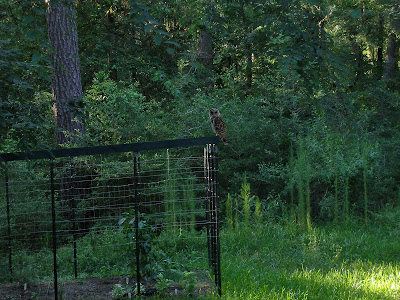Saturday was opening day of the spring season at
Grogan's Mill Village Farmers Market in The Woodlands.
We were very busy last week getting ready for the market. Although the fall season market ended in mid-December, less than 4 months ago, we were out of practice. Everything seemed to take a long time, I guess because it was no longer routine. Plus, this is the first time we have grown some of the fall/winter crops for market.
I did a few things ahead of time, like dragging out of the closets all the market paraphernalia, such as containers and bags, signs, and other things we have with us in the booth. I had also printed some flyers and recipes. Still, there was a lot to do come Friday. Luckily, we both had the day off.
The first step on Friday, after we had done the routine stuff like watering, was to harvest the vegetables. Here is our rainbow of veggies, fresh from the garden:
Swiss chard, carrots, beets, spinach and kale
Red leaf lettuce, scallions, and radishes
Once we had harvested the veggies, we cleaned them up, weighed them, split them up into bunches, and put them in coolers to keep them fresh. After that we repeated the process with the herbs, but I forgot to take pictures of those. We also sorted out the tomato and herb plants we wanted to sell. Then we started working on setting prices, making signs for the table, and figuring out how we were going to display the various veggies on the table. Decisions, decisions! Once that was done, we packed as much into the truck as we could ahead of time, and collapsed into bed.
When we got up Saturday morning, there was a light fog, which is actually good because it helps keep the produce from drying out. We loaded the rest of the stuff into the truck and headed out to The Woodlands. About halfway there, we drove straight out of the fog and could see the sunrise. It was nice to be on the road so early with hardly any traffic.
Spirits were high among the vendors as we all set up our booths. Everyone seemed happy to be back and excited about the beautiful spring weather. We were glad to see friends again, but had little time to chat because the customers started coming early!
Here are a couple of photos we managed to get when we were almost done setting up:
I forgot to put out the lettuce and the cut herbs before Ed took the picture - oops! As you can see, the fog followed us, but it didn't stick around long. It soon lifted and we had a gorgeous, sunny spring day. The market attracted a lot of people; we stayed busy the entire time. It was fun to see familiar faces and also to meet a lot of new people.
We will start it all over again tomorrow, but this time should be a lot easier!




















































